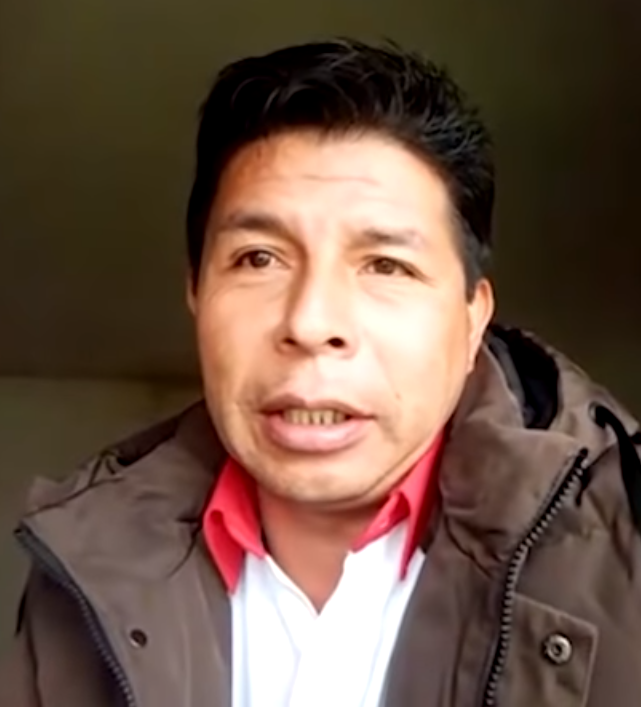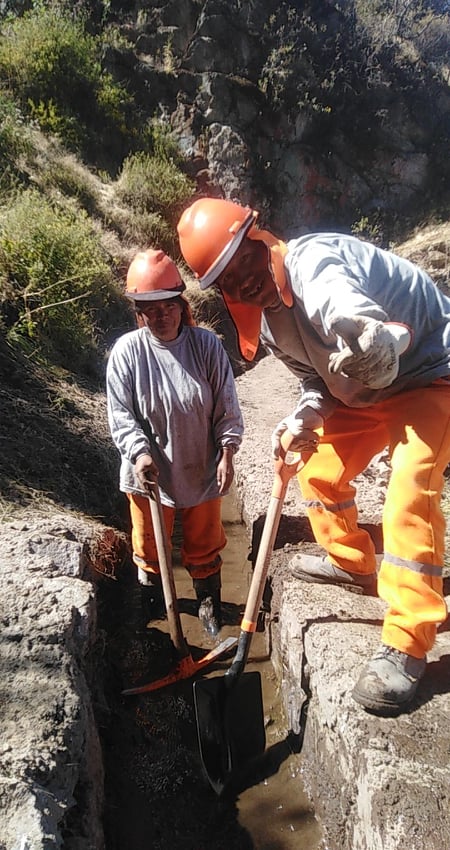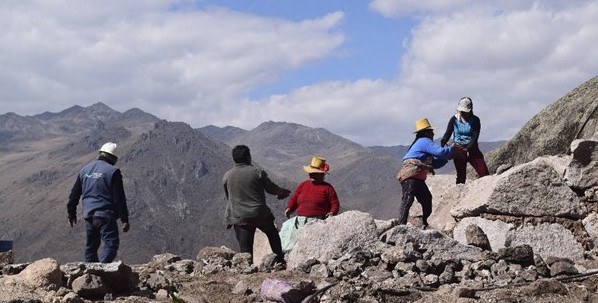On Sunday, thousands of Peruvians flocked to social media to debate the validity of the Spanish language term ‘cosecha de agua’ (water harvesting). This virtual war of words followed political sparring earlier that day when Peru’s presidential candidates took to the podium in the southern city of Arequipa for their second and final televised debate prior to the runoff election this Sunday 6 June. The two candidates in Peru’s polarised elections are right-wing Keiko Fujimori of the Fuerza Popular party and leftist Pedro Castillo of Perú Libre. In April’s first round of elections, none of the presidential candidates won a straight majority, however Castillo and Fujimori, now running head to head, polled most votes.

During the debate, teacher and union leader Castillo used the term ‘cosecha de agua’, meaning ‘water harvesting’, when articulating his proposal for developing sustainable employment for the country (his vision includes training engineers in water harvesting technologies). Water harvesting is an ancestral Andean method for capturing and storing rainfall so that the water can be used (i.e. ‘harvested’) for irrigation during the dry season.
The term ‘cosecha de agua’, however, was unfamiliar to some critics who, living far from the country’s upper watersheds, evidently have little understanding of the effects of climate change on Andean livelihoods and the ancestral water management strategies that are becoming increasingly important for storing water.
Critics of Castillo’s debate performance mocked his use of the term, many taking to social media to question the existence of ‘water harvesting’, assuming Castillo’s reference to ‘cosecha de agua’ was made in error. Related arguments claimed Castillo’s Spanish makes him unfit to be president.
Castillo is a highlander (from Cajamarca in the northern highlands) and the term ‘cosecha de agua’ is an accepted phrase in the Spanish of his homelands. Often termed ‘Andean Spanish’, highland dialects of Spanish are characterised by the realities of living and working in the altiplano, and incorporate words from indigenous languages alongside Spanish language terms that to urbanites can sound idiosyncratic.
In communities across the Andean region, ‘cosecha de agua’ has become an increasingly familiar term over the last decade since the pre-Hispanic method of water storage is being re-introduced in many communities. In San Pedro de Casta in Lima’s Huarochirí province, the existing amuna infrastructure is currently being restored with support from the NGO Aquafondo.

Crucially, the practice is being re-introduced to mitigate the impacts of climate change on access to water. In the Huarochirí village of San Andrés de Tupicocha, where, in the absence of glaciers, there is no access to glacial run-off, ancestral methods of water harvesting have been maintained over time, rather than being re-introduced. Water harvesting exists, and this has been the case for centuries, since pre-Hispanic times.
The criticisms of Castillo’s use of the term ‘water harvesting’ are grounded in racism and linguistic discrimination. Speakers of Andean Spanish, with its influences from the region’s indigenous languages, are at risk of being discriminated against since their ways of speaking are markedly different to the variety of Spanish spoken by the Lima elites.
They speak another Spanish
As an elderly research collaborator in a Huarochirí village remarked during my doctoral fieldwork in 2012, ‘In Lima it’s another Spanish. They speak another Spanish! Sometimes we don’t understand each other’. I myself was once told by a Limeño that the variety of Spanish I speak (i.e. Andean Spanish) is ‘indigenous Spanish’. This candid remark reveals the association between the speaking of Andean Spanish and the ascription of indigenous identity. Native speakers of Andean Spanish are told their Spanish is ‘wrong’, and this view is reinforced through the education system, to the point where this intolerance of difference is internalised; I have heard speakers of Andean Spanish themselves say that they have poor Spanish.
Further to the racist undertones, the remarks about water harvesting reveal a concerning degree of ignorance about the realities of Andean life and the urgency of the climate crisis for Andean livelihoods. Regardless of the fact that some terms used by highlanders are unfamiliar to others, a quick online search of ‘cosecha de agua’ brings up countless resources including digital booklets, videos, blog posts and scholarly articles on the subject.
Hopefully Peruvians who were previously unfamiliar with the practice of water harvesting, since Sunday’s presidential debate have become somewhat better informed thanks to the attention given to the topic in Peru’s media in the subsequent days.
With climate change making locally adapted technologies like this all the more important, further conversations about these kinds of technologies are sorely needed regardless of who wins the election. It is clear that continued conversations about linguistic discrimination against Peruvian highlanders are equally imperative.
Nevertheless, in the context of the disastrous effects of the coronavirus pandemic in Peru and severe political instability in recent years, divisions in Peruvian society seem deeper than ever. As the wealthiest sectors of Peruvian society fear for their future economic security, power and privileges in the event of a triumph for Castillo, the polemical reactions to his language appear to be symptomatic of an increasing sense of panic among Peru’s elite.
The elites are not alone in their panic. In the last decade, the country has seen the emergence of a middle class, many of whom are just as fearful of Castillo’s conservative leftist policies, which include raising taxes and writing a new constitution, as is currently happening in Chile. Would a vote for Castillo mean giving up their hard-earned progress? Would it mean a step back for them in financial terms?
In summary, the reason why #CosechaDeAgua is trending in Peru is not just the elites’ colonial legacy ignorance of Andean ways of speaking and making a living in a harsh environment. At the heart of this social media frenzy is a much more complex web of tensions where the more precarious sectors of Peruvian society are banking on being able to safeguard the limited resources they have to secure their future economic prosperity. For Peru’s poorest communities, harvesting water is to them what voting Fujimori means for others; security in uncertain times.
Main image: Infrastructure for harvesting water has been built in San Pedro de Casta through communal labour over the last year. Image credit: Comunidad Campesina de San Pedro de Casta.
Sarah Bennison (Dr Sarah Bennison (st-andrews.ac.uk) is an interdisciplinary Andeanist specialising in irrigation customs, with a special interest in the highlands of Lima (Peru). She is a Research Coordinator in the School of Earth and Environmental Sciences at the University of St Andrews, working in a team leading the University’s new interdisciplinary research network on climate, energy, environment and sustainability; STACEES (st-andrews.ac.uk). She is also Honorary Research Fellow in Social Anthropology at the University of St Andrews.

